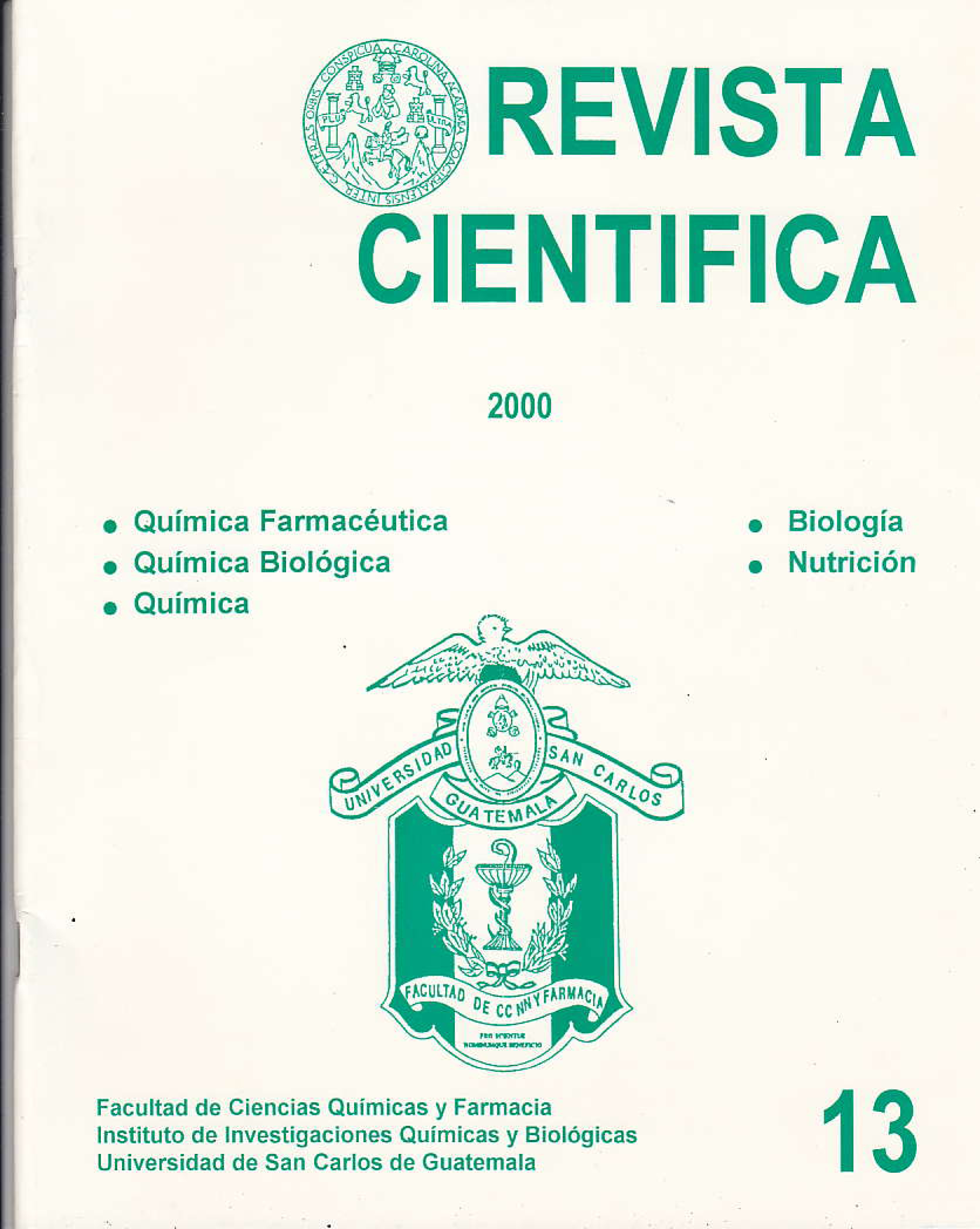Development of a hospital epidemiological surveillance program for patients with HIV-AIDS in the clinic
DOI:
https://doi.org/10.54495/Rev.Cientifica.v13i1.326Keywords:
a hospital epidemiological surveillance program, HIV-AIDS, the clinic of the Guatemalan Association for the Prevention and Control of AIDS at the San Juan de Dios General HospitalAbstract
An Epidemiological Surveillance program was carried out, which consisted of the creation of databases in the Epi Info version 6 program, in which the information of 157 HIV positive patients, new from the year 1996, from the clinic of the Guatemalan Association for the Prevention and Control of AIDS at the San Juan de Dios General Hospital. The first or baseline database collects information about demographic, economic data, risks, support networks, referral, and the patient's condition when they arrive at the clinic after learning their diagnosis. The second database or the general evaluation of the patient, with information about weight, temperature, Karnofsky scale and reason for visit, for each patient. The third database, or laboratory tests, provided results on the tests that were performed on the third visit and those that were performed on repeat visits. These included complete hematology, transaminase tests, urea nitrogen, creatinine, Syphilis testing (VDRL, FTABS), Surface Antigen, antitoxoplasma, and microbiological examinations (cultures and stains). The fourth database or patient follow-up information, had information about symptoms and signs, events associated with AIDS, treatments, procedures, radiological studies, hospitalizations, special examinations such as Pap smears and CD4 counts, the final event was also recorded in the deceased patients. Through the databases it was possible to have a file of all the patient information, the Interaction of the databases allowed us to have a general view of the patient, individually and collectively. In this way, obtaining the general profile of the patients, the general characteristics of the disease and the most relevant aspects of the patients living with HIV/AIDS who attended the clinic in 1996.Downloads
References
Ministerio de Salud Pública y Asistencia Social. Dirección Gen eral de Servicios de Salud. División de Vigilancia y Control de Enfermedades. Boletín Epidemiológico Nacional. Guatemala Julio 1995; 11 (período Vil). 90p. (p. 70-72)
Organización Mundial de la Salud. Atención a los Pacientes con Enfermedades de Transmisión Sexual; Informe de un grupo de Estudio de la OMS, Serie de Informes Técnicos No. 810. Ginebra: 1991. 97p. (p. 70-80).
Estadísticas Clínicas de la Asocición de Control y Prevención del SIDA. 1995. 20p (p. 5-13).
Reyes L. Estudio Serológico para la Identificación de Anticuerpos de Enfermedad de Chagas, Hepatitis B, VIH y Sífilis en Donadores de Sangre. Reguladores de 16 Hospitales de Gua temala. Universidad de San Carlos de Guatemala (Tesis de Graduación Facultad de Ciencias Químicas y Farmacia) 1996 (p60).
Laurence T, et al. Diagnóstico y Tratamiento Clínico. 29 ed. México: Manual Moderno, 1994. 1500p. (p1069-1090).
Berer M. El SIDA y la Planificación Familiar. Vol. I Bath Press. Inglaterra 1993. 60p. (p2-15)l. SUMARIO
Downloads
Published
How to Cite
Issue
Section
License
Copyright (c) 2000 Rosa Angélica Quán González, Blanca Samayoa, Eduardo Arathoon

This work is licensed under a Creative Commons Attribution 4.0 International License.
Authors who publish with this journal agree to the following terms:
- Authors retain copyright and grant the journal right of first publication with the work simultaneously licensed under a Creative Commons Attribution License 4.0 that allows others to share the work with an acknowledgement of the work's authorship and initial publication in this journal.
- Authors are able to enter into separate, additional contractual arrangements for the non-exclusive distribution of the journal's published version of the work (e.g., post it to an institutional repository or publish it in a book), with an acknowledgement of its initial publication in this journal.
- Authors are permitted and encouraged to post their work online (e.g., in institutional repositories or on their website) prior to and during the submission process, as it can lead to productive exchanges, as well as earlier and greater citation of published work.









